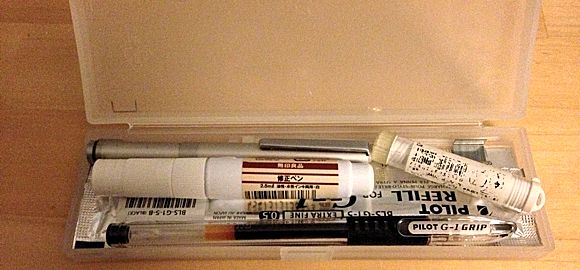Choose two objects that you use every day and analyze their design using the principles described in Chapter 1 of The Design of Everyday Things. Imagine describing what the object is and what it’s designed to do to someone who has never seen it before. Is it intuitive or frustrating? Come up with three ways to alternate the design for that object and see how it changes its function.
Affordance, Causality, Visibility, Constraints, Mapping, Feedback
The electric eraser by Smiggle is actually not a bad design and is intuitive in its shape which fits the palm of the hand and the button is made of rubber which affords pressing. But there are a number of ways to hold it and some of the visual cues may be misleading which could be frustrating. For example, the orientation of the shape of the on button does not exactly coincide with the placement of my thumb and there are different ways of holding the device.
The twist eraser from Muji which is no longer available anymore is a novel concept for an eraser. Its design leaves subtle clues about how it functions and so it does not look like an eraser. The clues are the spiral thread visible through the transparent plastic body and a rubber grip on one ends which affords gripping on to. A sticker on it has instructions on how to use it. I think the design is not intuitive because while it follows the convention of a screw meaning clockwise to tighten and anti-clockwise to loosen the user does not know which side to turn to push out the eraser or retract the eraser and with respect to the top or bottom which is unclear.

![q [Converted]](https://oss.adm.ntu.edu.sg/ychan007/wp-content/uploads/sites/861/2016/08/q-Converted-1024x335.jpg)

![a [Converted]](https://oss.adm.ntu.edu.sg/ychan007/wp-content/uploads/sites/861/2016/08/a-Converted-1-1024x811.jpg)